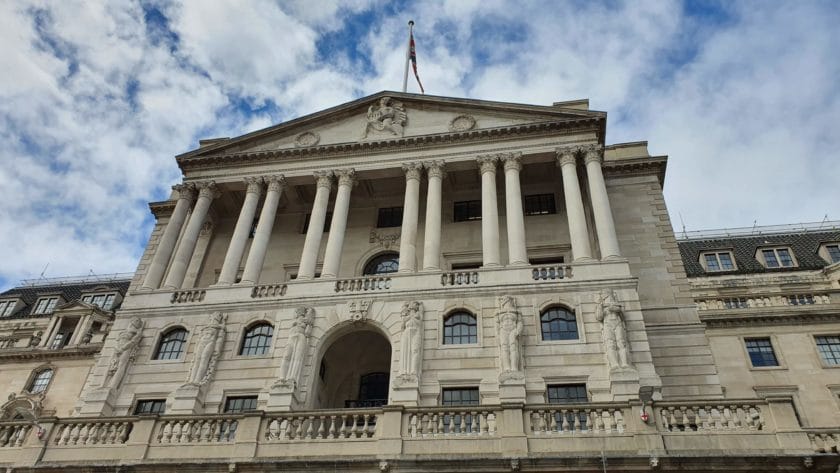Laith Khalaf, head of investment analysis at AJ Bell, comments on the forthcoming Bank of England interest rate decision.

The Bank of England is caught between a rock and a hard place, as it has to choose between pushing more mortgage borrowers towards the brink and letting inflation run riot.
The latest readings for core inflation and wage growth have come in hot, and that has spooked the market, sending gilt yields skywards and raising expectations of more interest rate hikes to come.
The market is now firmly pricing in an interest rate rise at the MPC’s June meeting, and then four further hikes, taking us to 5.75%. A few hawkish comments from the Bank of England, or some more ugly inflation data, could easily tip those expectations up to 6%.
While interest rates may not ultimately hit those heights, those expectations do set market pricing in the here and now for government bonds, cash accounts and mortgages.
Current interest rate pricing reflects alarm bells ringing in the market, but some moderation in inflationary pressures over the summer would pour balm on the situation. The Bank of England will also be cognisant of the fact the full force of its tightening to date is still working its way through the economy.
Having said that, should inflation data remain ugly, the Bank will be under pressure to take action, and so will the Treasury, if it looks like the Prime Minister’s pledge to halve inflation is at risk of falling short.
It will be interesting to see if the latest inflation data persuades the two doves on the MPC to change tack and back a rate hike, after voting to pause monetary tightening throughout this year. If they do, that would be another reason for the market to price in higher rates. Silvana Tenreyro is one of the doves, and she will be leaving the MPC after this vote in any case, to be replaced by Megan Greene.
Bond market
The recent inflationary wobbles in the market have taken their toll on the bond market too, pushing up gilt yields, with the 2-year gilt yield rising to levels last seen in the wake of the mini-budget.
This is undoubtedly bad news for anyone taking out a mortgage at the moment, but last September’s widespread market panic hasn’t set in. Not yet, in any case.
The less frantic response might be explained by the slower speed of the shift in gilt yields. Last September, the two year gilt yield rose from 3% to 4.5% in the space of a week, whereas the recent ascent has been more gradual, as markets have digested a number of separate economic readings. That still creates pressure in the system and repricing in the mortgage market, but it hasn’t happened at the breakneck speed which caused headaches for DB pensions last September.
Of course those with low or no mortgage debt and high levels of cash are benefiting from higher savings rates, provided they are willing to shop around for them.
The fact that inflation is still running so hot means that even the best rates are lower than the headline rate of CPI. But inflation readings are backward looking, and what matters to savers putting money into cash accounts today is what inflation will be in future. If it falls precipitously in the next 12 months, one year fixed rate accounts offering upwards of 5% could look pretty heroic. But if inflation continues to be sticky, even that may fail to generate a real return that actually increases consumers’ buying power.





























